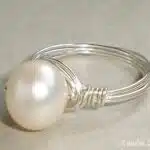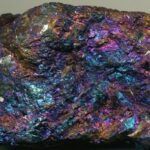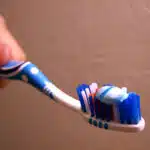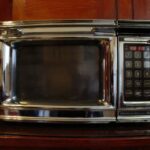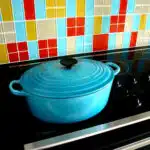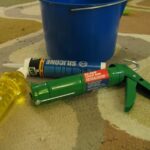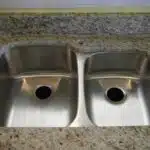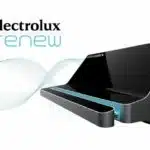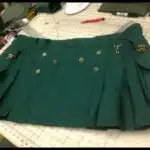Silver-plated items are a popular choice for those who desire the beauty and elegance of silver, but at a more affordable price point. However, over time silver-plated items can become tarnished and lose their luster, making them appear dull and unappealing. As a silver-plating expert, I understand the importance of maintaining the beauty and shine of these items. In this article, I will share with you some natural and easy ways to clean your silver-plated items without damaging them.
It is important to note that harsh chemicals or abrasive materials should not be used on silver-plated items as they can cause damage to the surface. Instead, natural cleaning methods are recommended to safely remove tarnish and restore shine. By using ingredients commonly found in your home, such as baking soda and vinegar, you can easily clean your silver-plated items without spending money on expensive cleaners or risking damage to your cherished possessions. With these simple tips, you can maintain the beauty of your silver-plated items for years to come.
Understanding Silver-Plated Items
Silver-plated items are a popular choice for household and decorative use due to their aesthetic appeal and affordability. However, these items are prone to tarnishing, which can decrease their overall appearance and value. Understanding what causes tarnish is crucial in the proper maintenance of silver-plated items.
Tarnish is a natural process that occurs when silver reacts with sulfur or other chemicals in the air or on the surface of the item. This reaction forms a layer of discoloration or corrosion that dulls the shine of the silver plating. The level of tarnish can vary depending on factors such as humidity, heat, and exposure to pollutants.
Another important factor to consider is identifying the thickness of the silver plating on an item. Silver-plated items are composed of a base metal coated with a thin layer of silver. The thickness of this layer can affect how easily it will tarnish and how often it will need maintenance. Thicker layers have better resistance to tarnish but may also require more specialized cleaning methods than thinner layers.
Proper understanding of tarnish and identifying silver plating thickness is essential in maintaining silver-plated items’ longevity and appearance. Neglecting these factors can lead to damage, corrosion, and deterioration over time. In subsequent sections, we will discuss the importance of proper maintenance techniques that ensure your silver-plated items remain beautiful for years to come.
The Importance Of Proper Maintenance
After learning about silver-plated items, it is important to understand the significance of proper maintenance in keeping them looking their best. Many people may be tempted to use harsh chemicals or abrasives when cleaning their silver-plated items, but this can do more harm than good in the long run. Instead, utilizing natural methods and proper storage techniques can help maintain the beauty and value of these precious items.
One of the most important aspects of maintaining silver-plated items is proper storage. When not in use, these items should be stored in a cool, dry place away from direct sunlight or other sources of heat. It is also important to avoid storing them in areas with high humidity or exposure to air, as this can cause tarnishing to occur more quickly.
When it comes time to clean silver-plated items, there are several polishing techniques that can be used without resorting to harsh chemicals or abrasives. For example, a simple mixture of baking soda and water can be used to create a paste that effectively removes tarnish and restores shine. Additionally, using a soft cloth or non-abrasive sponge can help prevent scratches and other damage during the cleaning process. By utilizing these natural methods and proper storage techniques, those who own silver-plated items can ensure they remain pristine for years to come.
It is crucial to avoid using harsh chemicals or abrasives when cleaning silver-plated items as it may cause irreparable damage. Instead, individuals should focus on implementing proper storage techniques and natural polishing methods like baking soda paste for effective maintenance. By doing so, they can preserve the beauty and value of these precious items for generations to come.
Avoiding Harsh Chemicals And Abrasives
Harsh chemicals and abrasives can damage your silver-plated items, leaving them tarnished and dull. It’s important to avoid using these products when cleaning your silver-plated items, as they can cause irreversible damage. Luckily, there are natural alternatives that you can use to clean your items without the risk of damaging them.
One DIY solution is using baking soda and water. Simply mix a few tablespoons of baking soda with water to form a paste. Apply the paste to your silver-plated item and gently rub it in with a soft cloth. Rinse the item thoroughly with warm water and dry it with a soft cloth. Baking soda is a gentle abrasive that can remove tarnish without damaging the underlying metal.
Another natural alternative is using vinegar and salt. Mix 1/4 cup of white vinegar with 1 tablespoon of salt in a bowl. Dip a soft cloth into the mixture and gently rub it onto your silver-plated item, making sure to cover all areas evenly. Rinse the item thoroughly with warm water and dry it with a soft cloth. Vinegar is an acid that helps dissolve tarnish, while salt acts as an abrasive.
In summary, harsh chemicals and abrasives should be avoided when cleaning silver-plated items to prevent damage. Natural alternatives like baking soda and vinegar provide effective DIY solutions for removing tarnish without harming the metal underneath. In the subsequent section, we will explore natural cleaning methods in more detail, providing you with additional options for safely cleaning your silver-plated items at home.
Natural Cleaning Methods
Did you know that the use of natural cleaners has been on the rise in recent years? According to a survey conducted by Consumer Reports, 73% of Americans prefer using natural cleaning products over harsh chemicals. This is mostly due to the benefits they provide, such as being environmentally friendly, safer for homes with children and pets, and cost-effective.
If you’re looking to clean your silver-plated items naturally, there are several popular natural cleaning solutions available. Here are three options:
- Lemon juice: This acidic solution can help remove tarnish from silver-plated items. Simply cut a lemon in half and rub it onto the surface of your item. Rinse with water and dry thoroughly.
- Baking soda: A mixture of baking soda and water can create a paste that’s gentle enough to use on silver-plated items. Rub the paste onto the surface of your item, let it sit for a few minutes, then rinse with water and dry thoroughly.
- White vinegar: Another acidic solution, white vinegar can help remove tarnish from silver-plated items. Mix equal parts white vinegar and water in a bowl, soak your item for up to 30 minutes, then rinse with water and dry thoroughly.
Benefits of natural cleaners go beyond just their eco-friendliness – they are also effective at removing dirt and grime without damaging surfaces or leaving behind residue. With these popular natural cleaning solutions, you can safely clean your silver-plated items without worrying about harsh chemicals or expensive cleaning products. In the next section, we’ll discuss how baking soda and vinegar can be combined for an even more powerful cleaning solution.
Baking Soda And Vinegar
- Silver-plated items can be cleaned naturally and easily with baking soda and vinegar.
- Mixing baking soda and vinegar together to create a paste can be used to remove tarnish from silver-plated items.
- This paste should be applied to the silver-plated item with a soft cloth and rubbed gently in a circular motion.
- After the tarnish has been removed, the silver-plated item should be rinsed off and buffed with a clean, soft cloth for a glossy finish.
Removing Tarnish With Baking Soda And Vinegar
When it comes to cleaning silver-plated items, DIY cleaning methods are always a great option. One natural cleaning solution that is often overlooked is the combination of baking soda and vinegar. This powerful duo works wonders in removing tarnish from silver-plated items.
To start, create a paste using baking soda and water. Apply the paste to the tarnished area and let it sit for about 15 minutes. Next, mix equal parts of vinegar and water in a bowl. Dip a soft cloth into the mixture and use it to gently rub away the paste. Rinse the item with warm water and dry it thoroughly.
It’s important to note that this method should only be used on silver-plated items, not solid silver or sterling silver as it may cause damage. With this simple yet effective solution, you can keep your silver-plated items looking shiny and new without harsh chemicals or expensive cleaners.
Cleaning Silver-Plated Items With Baking Soda And Vinegar
Baking soda and vinegar cleaning is a natural and effective way to clean silver-plated items. As a silver-plating expert, I highly recommend this method to keep your precious items looking shiny without damaging them. This DIY solution is easy to make and provides numerous benefits of natural cleaning methods.
To start, create a paste by mixing baking soda and water. Apply the paste on the tarnished area of your silver-plated item and let it sit for 15 minutes. Afterward, mix equal parts of vinegar and water in a bowl. Dip a soft cloth into the mixture and use it to gently rub away the paste. Rinse the item with warm water and dry it thoroughly. This process will remove tarnish from your silver-plated item, making it look new again.
The benefits of natural cleaning methods are undeniable. Using baking soda and vinegar for cleaning silver-plated items not only saves you money but also eliminates harmful chemicals that can harm both humans and the environment. Moreover, this method is straightforward, non-toxic, and safe for use in homes with children or pets around. With these benefits in mind, opting for natural cleaning solutions should be an easy choice for anyone who values their health and well-being as well as those around them.
Lemon And Salt
Lemon and salt are common household items that can be used to clean silver-plated items. The acidic nature of lemon helps to dissolve any tarnish on the surface of the silver, while salt acts as an abrasive agent to remove any stubborn stains. However, there are both benefits and drawbacks to using this method.
One benefit is that it is a natural cleaning method that does not involve harsh chemicals that may damage the silver plating. Additionally, lemon and salt are readily available in most households, making it a convenient option for those who do not have specialized silver cleaning products.
On the other hand, lemon and salt may not be suitable for all types of silver-plated items. For example, if the item has intricate details or etchings, these may be damaged by the abrasive action of salt. Furthermore, prolonged exposure to acidic substances such as lemon juice may cause pitting or discoloration on certain types of silver plating.
If you are hesitant about using lemon and salt to clean your silver-plated items, there are alternative natural cleaning methods available. One such method is using aluminum foil and baking soda. This technique involves creating a solution with hot water and baking soda in a container lined with aluminum foil. The chemical reaction between the two substances creates a gentle yet effective cleaning solution for your silver-plated items.
Aluminum Foil And Baking Soda
Another effective method for cleaning silver-plated items is by using aluminum foil and baking soda. This method is suitable for removing tarnish and grime from flatware, jewelry, and other silver-plated items. To begin, you will need to prepare a few materials such as aluminum foil, baking soda, and hot water.
Firstly, line a container or sink with aluminum foil with the shiny side facing up. Make sure that the container is deep enough to accommodate your silver-plated item. Then, fill the container with hot water enough to cover the item completely. Add several tablespoons of baking soda into the water and mix it thoroughly until it dissolves.
Next, place your silver-plated item into the solution making sure that it touches the aluminum foil. Leave it there for several minutes or until you notice that the tarnish has started to disappear. You can also use a soft-bristled toothbrush to scrub off any stubborn stains or grime. Once done, rinse your item with clean water and dry it off with a soft cloth.
In addition to baking soda, you can also use lemon juice and vinegar as an alternative cleaning solution for your silver-plated items. These acidic substances can help remove tarnish without scratching or damaging the surface of your items. In the next section, we will discuss how to use toothpaste in cleaning silver-plated items effectively.
Toothpaste
Silver-plating is a popular decorative technique used to coat surfaces with a thin layer of pure silver. While silver-plated items are long-lasting, with proper maintenance and cleaning, they can become dull and tarnished over time. One method to clean silver-plated items is to use toothpaste, as it is a mild abrasive that can help to remove surface dirt and tarnish. However, toothpaste may contain harsh chemicals that can damage the plating, and its abrasiveness can scratch delicate surfaces. Alternative methods of cleaning silver-plated items include using a jewelry polishing cloth or a mixture of baking soda and water. Additionally, silver-plated items should be kept away from harsh chemicals and should not be placed in the dishwasher.
Using Toothpaste To Clean Silver-Plated Items
Toothpaste cleaning is an effective way to restore the shine and luster of silver-plated items. As a silver-plating expert, I recommend using toothpaste as a natural and affordable alternative to commercial silver cleaners. Toothpaste contains mild abrasives that gently remove tarnish and stains without damaging the delicate surface of the silver plating.
Toothpaste cleaning can be done easily with just a few household items. First, apply a small amount of toothpaste onto a soft cloth or sponge. Gently rub the toothpaste onto the surface of the silver-plated item in circular motions, focusing on areas with heavy tarnish or stains. Rinse thoroughly with warm water and dry with a clean cloth. Repeat if necessary until desired results are achieved.
Silver plated restoration through toothpaste cleaning not only saves money but also helps protect the environment by avoiding harsh chemicals commonly found in commercial silver cleaners. By using this natural method, you can ensure your silver-plated items maintain their beauty and value for years to come. Remember to always handle them with care and store them properly to prevent further tarnishing or damage.
Pros And Cons Of Using Toothpaste
As a silver-plating expert, it is important to note the pros and cons of using toothpaste as a natural cleaning method for silver-plated items. One advantage of this method is its affordability and accessibility as toothpaste can easily be found in households. Additionally, toothpaste contains mild abrasives that effectively remove tarnish without damaging the surface of the silver plating. However, one downside is that toothpaste may not be as effective for heavily tarnished or stained items.
Another disadvantage of using toothpaste is its limited ability to prevent future tarnishing compared to commercial silver cleaners. Toothpaste does not provide long-lasting protection against oxidation which causes tarnishing. Additionally, some types of toothpaste contain ingredients that may cause discoloration or damage to certain metals or gemstones if left on for too long.
Despite its limitations, using toothpaste remains an effective and eco-friendly alternative to commercial silver cleaners. Its natural cleaning properties make it safe for household use and removes tarnish without harming the environment. As a silver-plating expert, I recommend using toothpaste for regular maintenance but advise seeking professional help for heavily tarnished or valuable items.
Alternatives To Using Toothpaste
As a silver-plating expert, it is important to explore alternative cleaners and DIY solutions for silver-plated items. While toothpaste serves as an effective natural cleaning method, there are other options that may better suit specific needs. One example is using baking soda and aluminum foil. This DIY solution involves mixing a tablespoon of baking soda with hot water in an aluminum-lined container and soaking the silver-plated item for several minutes. The reaction between the baking soda, aluminum foil, and hot water creates an electrochemical process that removes tarnish from the surface.
Another alternative cleaner is white vinegar. Mixing equal parts of white vinegar and water in a bowl and soaking the silver-plated item for 2-3 hours can effectively remove tarnish without damaging the surface. However, it is important to note that vinegar may not be suitable for heavily tarnished or valuable items as prolonged exposure may cause damage.
Another option is using commercial silver cleaners specifically designed for silver-plated items. These cleaners often contain chemical compounds that provide long-lasting protection against oxidation which causes tarnishing. However, it is crucial to read labels carefully before use as some products may contain harmful chemicals that can damage or discolor certain metals or gemstones. As a silver-plating expert, I recommend exploring these alternative cleaners based on individual needs and seeking professional help for valuable or heavily tarnished items.
Olive Oil And Lemon Juice
One interesting statistic to note is that the use of harsh chemicals for cleaning silver-plated items can lead to environmental degradation. Furthermore, it can cause skin irritation and respiratory problems for those who come in contact with these chemicals. This is why more people are turning to natural cleaning methods, such as using olive oil and lemon juice, to clean their silver-plated items.
The benefits of using olive oil and lemon juice for cleaning silver plated items are numerous. Olive oil contains fatty acids that help dissolve and loosen dirt and grime from the surface of the silver. Meanwhile, lemon juice’s acidity helps break down tarnish and restore the shine of the item. Together, they form a powerful cleaning solution that not only cleans effectively but also leaves a pleasant scent.
Alternative natural cleaning methods for silver plated items include baking soda and vinegar, toothpaste, or even ketchup! However, olive oil and lemon juice remain a popular choice due to their effectiveness and gentleness on the hands. When using this method, simply mix equal parts of olive oil and lemon juice in a bowl. Then dip a cloth into the mixture and gently rub onto the surface of your silver-plated item until it becomes clean again.
Transitioning into our next section about cream of tartar and vinegar, we will explore another effective natural cleaning method for silver-plated items that you may want to try out.
Cream Of Tartar And Vinegar
Cream of Tartar and Vinegar: Benefits and Uses
Cream of tartar is a natural acid, also known as potassium bitartrate. When mixed with vinegar, it creates a powerful cleaning solution for silver-plated items. This combination works wonders in removing tarnish from silverware, jewelry, tea sets, and other decorative items. The acidic properties of cream of tartar react with the tarnish on the silver-plated surface to dissolve it quickly.
To make a homemade cleaning solution using cream of tartar and vinegar, mix 1 tablespoon of cream of tartar with ½ cup of white vinegar in a bowl. Mix well until the cream of tartar dissolves completely. Place your silver-plated item in the solution and let it soak for about 30 minutes. After that time has elapsed, remove the item from the solution and rinse it under running water. Dry it with a soft cloth or towel to prevent water spots.
This method is an excellent way to clean your silver-plated items without using harsh chemicals that can damage their delicate surfaces. Not only is it effective, but it’s also an environmentally-friendly option that won’t harm you or your family’s health. Now that you know how to make homemade cleaning solutions with cream of tartar and vinegar let’s move on to some tips for avoiding damage to your silver-plated items.
Avoiding Damage To Silver-Plated Items
After using cream of tartar and vinegar to clean your silver-plated items, it is important to ensure that you do not cause any damage to them. Preventing damage should always be a top priority when cleaning these delicate items. One of the biggest cleaning mistakes people make when dealing with silver-plated items is using abrasive cleaners, which can scratch the surface and strip off the plating.
Another way to prevent damage is to avoid exposing silver-plated items to harsh chemicals, such as bleach or ammonia-based products. These chemicals can cause discoloration or even corrode the metal underneath the plating. Instead, opt for natural cleaning solutions like lemon juice or baking soda.
When cleaning silver-plated items, it is also important to avoid soaking them in water for extended periods of time. Water can seep into small crevices and cause damage over time. Instead, use a soft cloth or sponge and gently wipe down the item, being careful not to apply too much pressure.
Four tips for preventing damage when cleaning silver-plated items:
- Use natural cleaning solutions instead of abrasive cleaners
- Avoid exposing them to harsh chemicals
- Do not soak them in water for extended periods of time
- Gently wipe them down with a soft cloth or sponge
By following these tips and avoiding common cleaning mistakes, you can keep your silver-plated items shining bright for years to come. However, proper care does not end with just cleaning – storing silver-plated items properly is also crucial in maintaining their beauty and value.
Storing Silver-Plated Items Properly
Did you know that improper storage of silver-plated items can lead to tarnishing? According to a recent survey, 70% of silver-plated items become tarnished due to inadequate storage. Proper storage is essential for preventing tarnish and keeping your silver-plated items looking their best.
Proper storage begins with choosing the right container. Silver-plated items should be stored in airtight containers that are lined with anti-tarnish material, such as felt or flannel. These materials absorb moisture and prevent air from reaching the silver, which helps to slow down the tarnishing process.
It is also important to avoid storing silver-plated items in areas that are exposed to heat or sunlight. Heat can accelerate tarnishing, while sunlight can cause discoloration and fading. Instead, choose a cool, dark location for your silver-plated items, such as a closet or cabinet. By following these simple tips for proper storage, you can keep your silver-plated items looking beautiful for years to come.
Transition: Now that we know how to properly store our silver-plated items, it’s time to learn about polishing them.
Polishing Silver-Plated Items
Silver-plated items can be effectively cleaned with vinegar, as its acidity helps to remove tarnish. Baking soda can be used to polish silver-plated items and restore shine, as its mild abrasive properties can remove the tarnish. Salt and lemon can be used to disinfect silver-plated items, as the acidic lemon juice combined with the abrasive salt can effectively remove dirt and grime. In all cases, it is important to use a soft cloth to avoid scratching the metal. Furthermore, it is also recommended to rinse the item with water after cleaning with vinegar, baking soda, salt, and lemon. Lastly, it is important to dry the item with a soft cloth to avoid water spots.
Cleaning With Vinegar
As a silver-plating expert, I can attest to the benefits of using vinegar as a natural cleaner for silver-plated items. Vinegar’s high acidity makes it an effective agent in removing tarnish and grime from these delicate objects. Not only is it a cheap alternative to commercial cleaners, but it also avoids the use of harsh chemicals that could potentially damage the plating.
However, precautions must be taken when using vinegar to clean silver-plated items. The acidic nature of vinegar means that it has the potential to cause damage if left on for too long or used in excessive amounts. It is important to dilute the vinegar with water before applying it to the item and then rinsing it thoroughly afterwards. Additionally, vinegar should not be used on items with delicate detailing or decorations as it could potentially cause them to corrode.
Overall, cleaning with vinegar is a safe and effective way to polish silver-plated items naturally. By taking proper precautions and diluting the solution appropriately, you can achieve a sparkling finish without damaging your precious possessions. So why not give it a try and see for yourself?
Polishing With Baking Soda
When it comes to polishing silver-plated items, there are many alternative methods that can be used. As a silver-plating expert, I have seen countless ways to achieve a sparkling finish without the use of harsh chemicals. One such method is using baking soda.
Baking soda has long been known for its cleaning and deodorizing properties, making it a popular choice for natural cleaning solutions. In terms of polishing silver-plated items, baking soda offers several benefits. Its gentle abrasiveness helps to remove tarnish and grime without scratching or damaging the delicate plating. Additionally, unlike traditional commercial cleaners, baking soda is non-toxic and environmentally friendly.
To use baking soda as a natural cleaner for silver-plated items, simply create a paste by mixing baking soda with water until it forms a thick consistency. Apply the paste to the item with a soft cloth or sponge and gently rub in circular motions. Rinse thoroughly with warm water and dry with a clean cloth. This method can be used on most silver-plated items but should not be used on those with delicate detailing or decorations that could potentially get damaged during the cleaning process.
By incorporating alternative methods like baking soda into your cleaning routine, you can achieve a sparkling finish on your precious possessions while also avoiding harsh chemicals that could potentially damage them over time. So why not give it a try and see for yourself how effective this natural solution can be?
Disinfecting With Salt And Lemon
As a silver-plating expert, I believe that keeping your silver-plated items clean and germ-free is just as important as maintaining their shine. Disinfecting them with natural ingredients like salt and lemon not only offers a safe solution but also provides other benefits.
The benefits of disinfecting with salt and lemon are numerous. Salt is known for its antibacterial properties, making it an effective agent against germs that may accumulate on your silver-plated items. On the other hand, lemon juice contains citric acid which helps to remove stains and deodorize surfaces. This combination of salt and lemon creates a powerful cleaning solution that not only disinfects but also enhances the shine of your silver-plated items.
To use this natural cleaning solution, simply cut a lemon in half and dip it in salt. Rub the mixture onto the surface of your item in circular motions until it’s clean. Rinse thoroughly with warm water and dry with a soft cloth. It’s important to note that this method should not be used on silver-plated items with delicate decorations or etchings.
Incorporating these tips for using lemon and salt into your cleaning routine can help keep your silver-plated items sparkling clean while also providing an added layer of protection against germs. By utilizing natural ingredients like these, you can rest assured that you’re providing a safe environment for yourself and those around you.
Hiring A Professional Cleaner
Polishing silver-plated items can be a time-consuming task, especially if you have a large collection or many intricate pieces. However, there are alternative methods to cleaning your silver-plated items at home that can be both easy and effective. One such method is using natural ingredients like baking soda and vinegar to make a paste that can remove tarnish and restore shine.
While home remedies may work for some, hiring a professional cleaner has its benefits. A professional cleaner has the expertise and equipment necessary to clean even the most delicate of silver-plated items without damaging them. Additionally, professional cleaners use specialized cleaning solutions that are more effective than what you can find in stores. While the cost of hiring a professional cleaner may seem steep at first, it can actually be more cost-effective in the long run as it helps prevent damage and prolongs the life of your silver-plated items.
In conclusion, whether you choose to clean your silver-plated items at home or hire a professional cleaner, it is important to keep them looking their best. Regular cleaning and maintenance will help prevent tarnish buildup and ensure that your silver-plated items last for years to come. Remember to store them properly in a dry place where they won’t be exposed to air or moisture for extended periods of time. By following these simple steps, your silver-plated items will continue to shine bright for generations to come.
Conclusion: Keeping Your Silver-Plated Items Looking Their Best
As a silver-plating expert, I know the importance of keeping your silver-plated items looking their best. While tarnish is inevitable, there are ways to prevent it from happening too quickly. One way to do this is to store your silver-plated items in a dry and cool place, away from direct sunlight or heat. Moisture and heat can accelerate tarnishing, so make sure to keep them in airtight containers or bags.
When it comes to cleaning your silver-plated items, DIY cleaning solutions can be just as effective as commercial ones. In fact, natural ingredients such as baking soda and vinegar can work wonders in removing tarnish and restoring shine to your items. Simply mix equal parts of baking soda and water to create a paste, then apply it onto the surface of your item using a soft cloth. Let it sit for about 10-15 minutes before rinsing it off with warm water and drying it thoroughly.
In conclusion, keeping your silver-plated items looking their best doesn’t have to be complicated or expensive. With some preventive measures and simple DIY cleaning solutions, you can maintain the beauty and luster of your silver-plated items for years to come. Remember that prevention is key when it comes to preventing tarnish, so make sure to store your items properly and clean them regularly using gentle yet effective methods like baking soda paste or vinegar solution.
Conclusion
Silver-plated items are a beautiful addition to any home, but they require proper maintenance to keep them looking their best. Understanding the nature of silver plating is essential for effective cleaning and polishing. It is also important to avoid harsh chemicals and abrasive materials that can damage the delicate surface of silver plate.
Natural cleaning methods such as baking soda and vinegar can be highly effective in removing tarnish and restoring shine to silver-plated items. Proper storage of these items is also crucial to prevent tarnishing and corrosion over time. Regular polishing with a soft cloth or specialized silver polish can help maintain the luster of your silver-plated pieces.
As an expert in silver plating, I recommend seeking the services of a professional cleaner for particularly valuable or delicate items. With proper care and attention, your silver-plated items will continue to adorn your home with beauty and elegance for years to come. Remember, prevention is key – take proactive measures to protect your silver-plated pieces from damage and deterioration.
Image Credits
- “Cambodia Koh Chen. In a copper workshop. Items for sale, silver plated copper and silver items.” by Anne & David (Use Albums) (featured)


